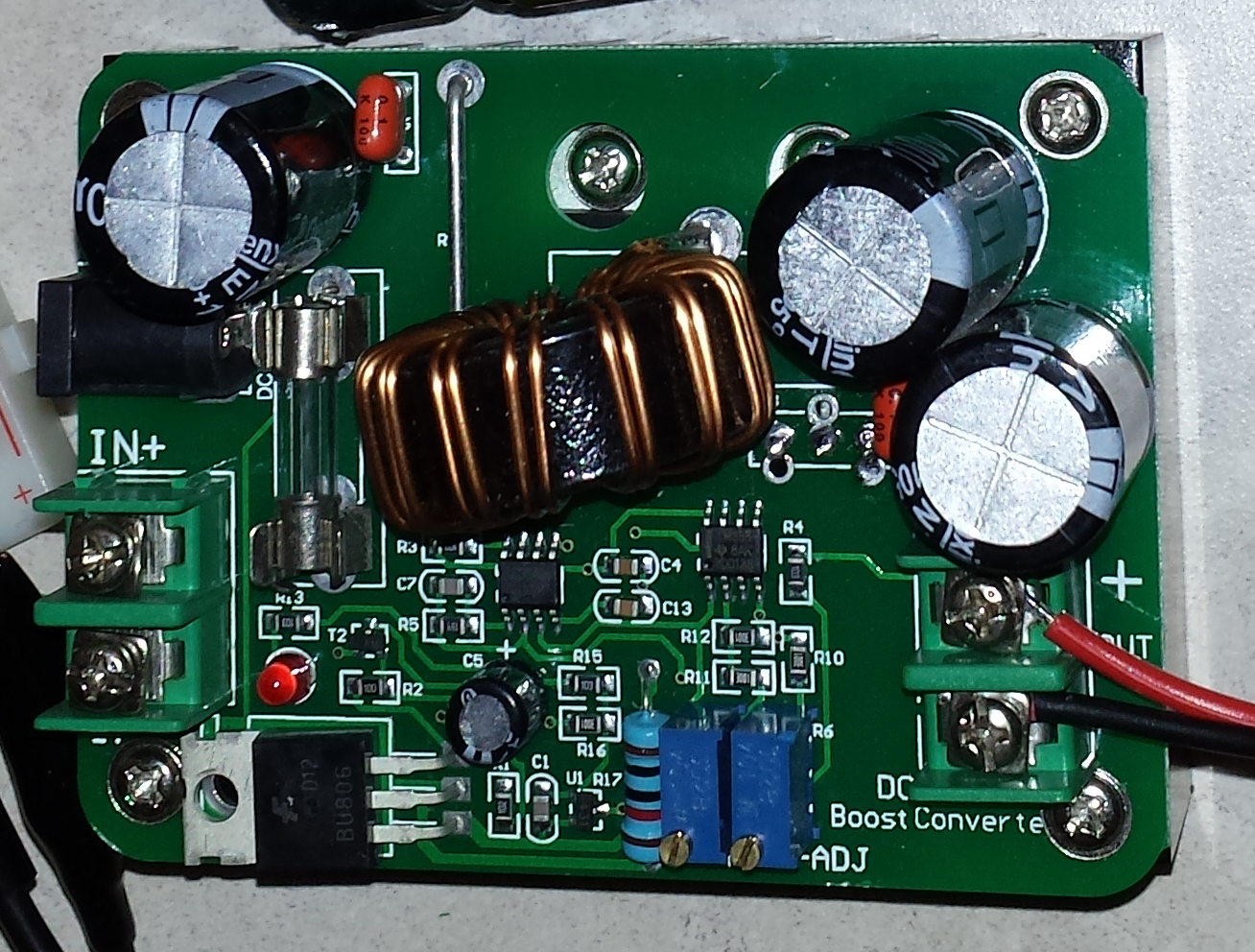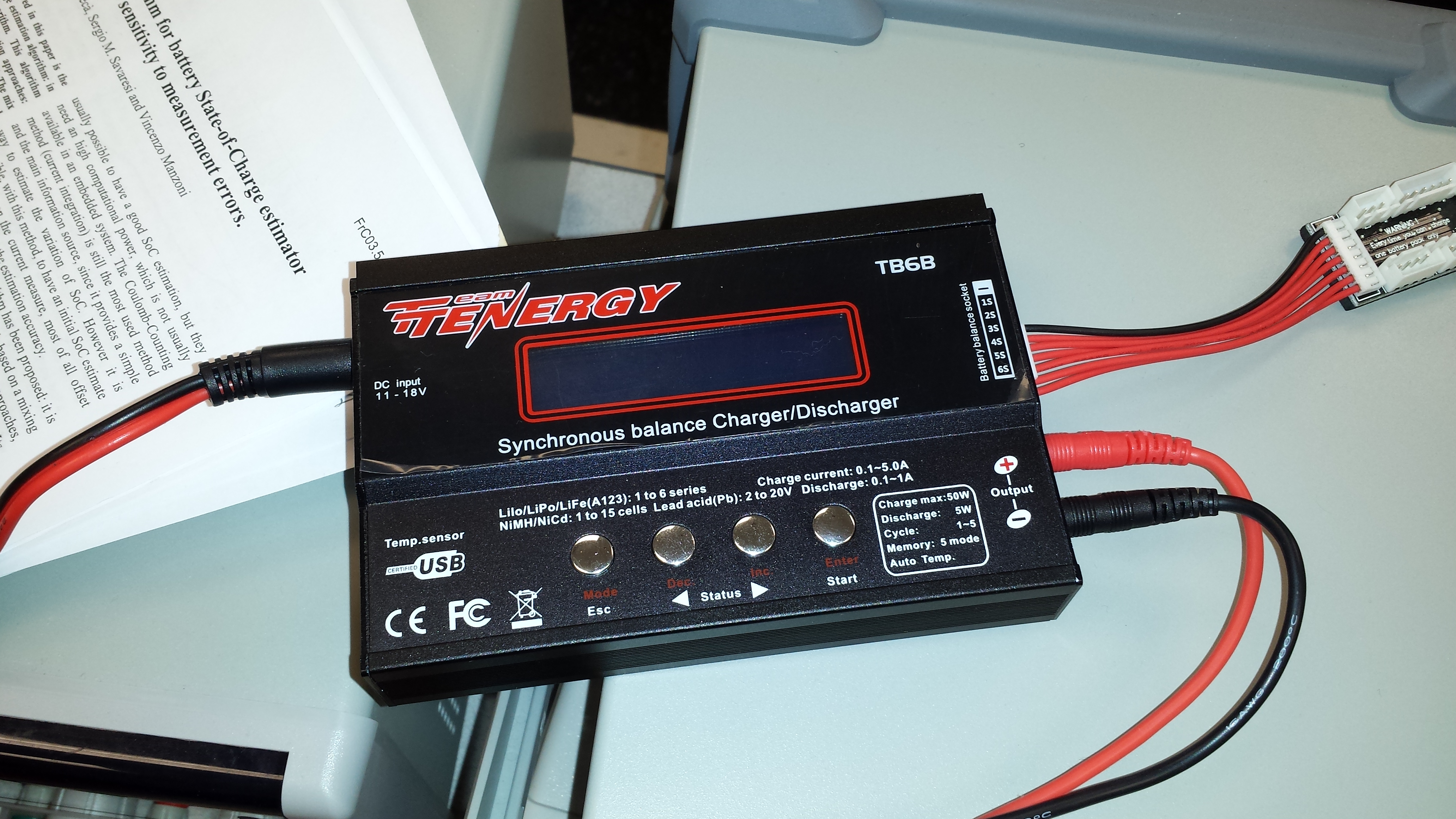We purchased a 14.8V – 5AH lithium polymer battery and charger to use with the 320Kg*cm servo. The battery is shown below.

In order to produce the maximum torque allowed on the servo, we purchased a 600W boost converter. The converter is shown below.

This converter allows us to convert the 14.8V to 24V. In order to provide a higher voltage, the input current must be increased. Therefore to satisfy this servo’s maximum current (6.8A) the equation is as follows:
P1 = P2
P1 = VI
P1 = (24V)*(6.8A)
P1 = 163.2W
163.2W = (14.8V)*I
I = (163.2W)/(14.8V)
I = 11.027A
Therefore, the maximum current that the battery will use at any given point from the servo is 11.027A. Although, the power usage is much higher than the previous servo, the amount of weight it can handle is much higher.
The average forearm length is 26cm and the servo can handle a maximum of 320Kgcm, therefore since:
Torque = F*d
320Kg*cm = F*26cm
F = (320Kg*cm)/(26cm)
F = 12.3Kg * 9.81 m/s^2
F = 120.663N
Or in otherwords, the servo can carry up to 12.3Kg (27 pounds) at a forearm’s length of 26cm.
Also, we purchased relays to switch on/off the power, controlled through the microcontroller. The relays are shown below.



Recent Comments